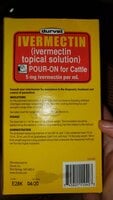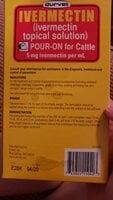OK-tons of conflicting info and I THINK I have the little bit I could understand correct. POUR ON 1/2cc per bird(standard chickens)on skin.Somewhere on here it was said "6 drops per bird" BUT what kind of dropper????Could cause HUGE dosage difference if different "droppers" are used. So I am going with the 1/2 cc suggestion(between shoulder blades) Is this possibly a problem? I hate to go to the effort(32 birds tonight) if it will have NO effect and I also don't want them to die!TY.
Last edited:



